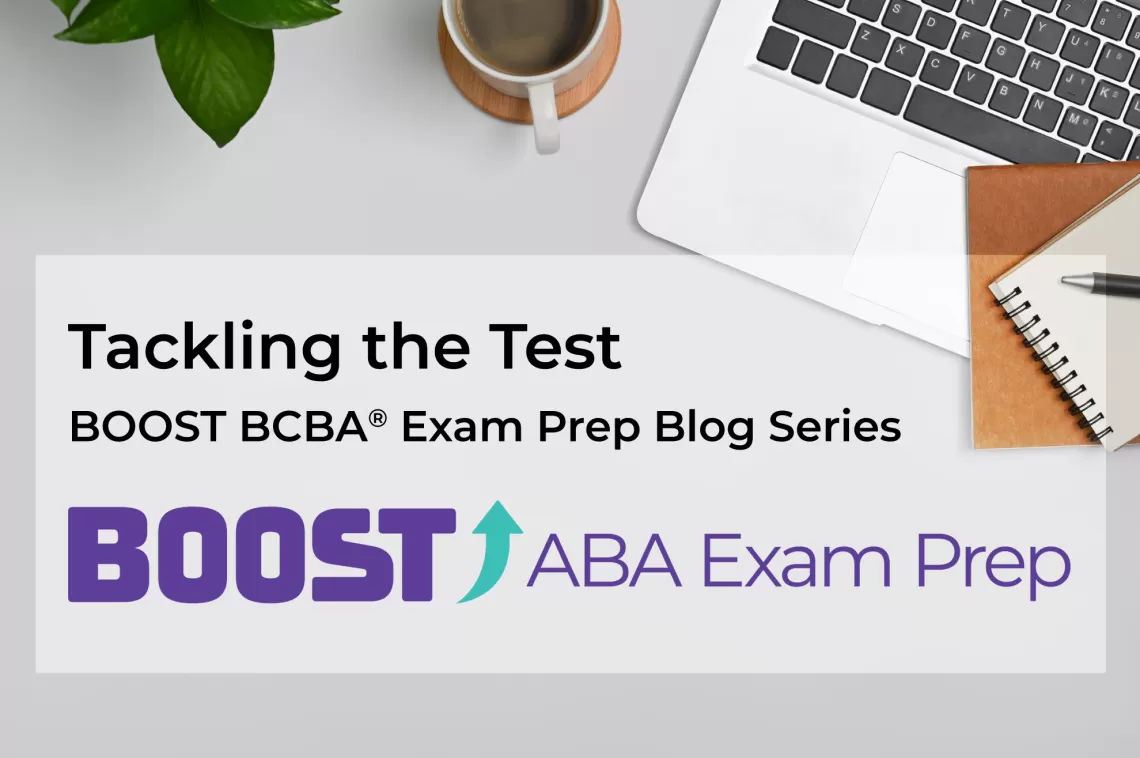
Study Methods that Work: 8 Study Strategies for the BCBA® Exam - Tackling the Test Series
Part 5
Part 1: Intro to the Series
Part 2: First Steps for Preparing for the BACB® Exam
Part 3: Mock Exams for BCBA® Exam Prep
Part 4: Self-Management Strategies for BCBA® Exam Prep
Part 5: Study Methods that Work
Part 6: Beyond Rote Memorization
Part 7: 6 Ways to BOOST Your Study Time
Part 8: 10 Ways Your Friends and Family Can Help You Study for the BCBA® Exam
Part 9: Test-taking Strategies for the BCBA® Exam
Part 10: Conquering Test Anxiety with Behavioral Science
Success as a student in any discipline requires a mastery of various high-level skills. Among the most crucial are practical and efficient study habits.
Study techniques can be as varied as the students using them. And while it’s important to find the practices that work best for you, some methods have proven to be more effective for learning. In this blog, we will highlight eight proven study techniques to help you prepare for the BCBA® exam, BCaBA exam, or any other academic goal you may have.
1. Spaced Repetition
Also known as distributed practice, spaced repetition suggests spreading studying over time rather than attempting to cram right before the BCBA® exam. Studying across spaced intervals strengthens long-term retention.
TIP! To ensure you have sufficient time to study and practice all the needed content and skills, include spaced repetition in your BCBA® exam prep self-management plan

2. The Pomodoro Technique
This strategy has a fancy name, but it’s actually a simple way to promote focused work. To use this self-management technique, set a timer for 25 minutes of intense study, then take a 5-minute break. After completing four cycles, take a longer break of 15-30 minutes. This technique helps to keep you engaged, combats burnout, and improves overall productivity. If you plan to use this technique, write it as a study goal within your exam prep plan to meet your individual goals.
3. SAFMEDS
SAFMEDS stands for say aloud fast, minute every day, shuffled. The flashcard system is an effective method for building fluency and quickly recalling key terms. While it’s not a replacement for deep study (keep it to a minute per day), SAFMEDS is a great way to build a strong foundation of behavior analytic terminology. See our SAFMEDS Tips Sheet for more on using SAFMEDS.

4. Active Recall or Recall and Write
Once you’ve developed fluency with basic terminology, the next step is to identify the concepts, principles, and interventions beyond your flashcard deck. After reading and while studying, test yourself by recalling information from memory without looking at your notes or textbooks. For example, if you read an article that mentions DRI in the abstract, see if you can recall what DRI interventions look like without returning to your notes. Then, continue to read the rest of the article. Or, if you come across a test question that lists different maintenance techniques as answer choices, don’t just look for the correct answer and move on; try to define each technique. Read a section of text, and then, from memory, write down your understanding of what you read. This method is similar to a generalization test—can you recall information under new environmental contingencies?
5. Mnemonics and Examples
To help you remember complex information, create memory aids such as acronyms, rhymes, or visual associations. These are called mnemonic devices, and you’ve likely encountered them in your schooling up to this point as you learned the order of the planets or your multiplication tables. You can find many of these online, but you might be more likely to remember personally relevant examples. Work with a study group to develop mnemonics tailored to your course material.
6. Interleaving
Interleaving is a technique where you alternate between different subjects or problems within the same study session. This keeps your brain active and can enhance comprehension and retention. You can also vary your learning resources, using textbooks, articles, course notes, videos, and more during the same session. This method not only promotes deeper learning but also mirrors how you’ll see questions on the exam. The BCBA® exam won’t lay out questions by content area; instead, you’ll see them in random order.
7. Teaching Others
To teach a concept, you must understand it well. Explaining concepts to someone else helps reinforce your understanding. Step into the role of teacher and explain a concept to a supervisor or peer who can identify and help redirect anything you miss. If you don’t have access to a supervisor or peer, explaining a concept to a friend or partner can also be great! You’ll have to check for accuracy yourself, but they can help you break down concepts in simple, easy-to-understand ways. When you teach others, you genuinely demonstrate an understanding of a skill.

8. Build Behavioral Momentum
You don’t need to spend much time on previously mastered content. You can, however, strategically study this content at the beginning of study sessions or before complex concepts to build behavioral momentum and reduce the aversiveness of new or complex concepts. If you dread studying experimental design types, start by labeling parts of a graph. When you can’t bear to look at one more way to conduct a functional assessment, build some behavioral momentum by reviewing preference assessments. It’s okay if getting started is a struggle; the solution is to build momentum before getting to those dreaded topics.
Wrap-Up
For most, the BCBA® exam is the last great hurdle on their academic/career path. Entering the field as a Certified Behavior Analyst opens opportunities, but getting there can be challenging. Success in your journey to passing the BCBA® exam is achievable with the right BCBA® exam study materials, skills, and tools.
By incorporating spaced repetition, the Pomodoro technique, SAFMEDS, active recall, mnemonics, interleaving, teaching others, and behavioral momentum into your studying, you will be well on your way to mastering the content needed for the certification exam. Whether you are beginning day one of your study routine or are already several weeks or months into studying, we wish you the best in your journey to BCBA® exam success.
Want to learn more about SAFMEDS?

